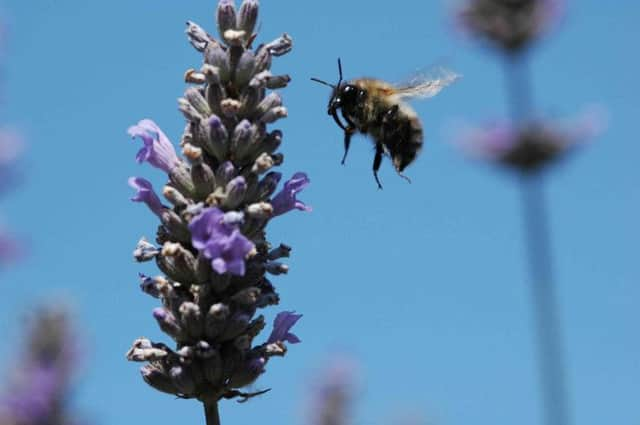Bees create buzz for Castle Stuart Golf Links


The conservation work at Castle Stuart Golf Links, which will greet the return of the Scottish Open in 2016, has seen it collect the GEO Certified ecolabel, an international symbol of ‘great golf environments’.
It recognises high standards for performance in nature conservation, water and energy efficiency, ethical and environmental supply chain, pollution control and community engagement.
Advertisement
Hide AdAdvertisement
Hide AdAs well as the bees, the long rough at the course provides habitats for ground nesting birds like skylarks and short eared owls and several buildings host kestrels, barn owls and other small birds like swifts and swallows.
Badger gates have also been installed to allow free access for the animals whilst keeping out rabbits.
And with its acclaimed, art deco-style, low carbon clubhouse supplied by a ground source heat exchanger, Castle Stuart consistently strives to reduce energy and water consumption.
All surface drainage run-off from the course is filtered three times before it reaches the Moray Firth to avoid any pollution risk.
In addition, a one-acre site on the course is given over to testing 40 species of fescue grass – with another 40 species being added to the trials this year – to select those which best suit the Highland climate, need the least water and are the most disease-resistant.
The Scottish Open venue has been praised both for its contribution to date and stated targets for continual improvement in the coming years.
Jonathan Smith, Chief Executive of GEO, praised the club for its achievements.
He said: “In a short period of time, the development and management teams at Castle Stuart have created a world-class golf facility that has brought tangible benefits to the local environment, community and economy.”
Advertisement
Hide AdAdvertisement
Hide AdCastle Stuart Golf Links general manager Stuart McColm, said: “We are privileged to have such a wonderful location and right from the outset we have done everything possible to ensure we protect, and enhance, the land and its wildlife so it can be enjoyed by many people in the years ahead.”
They are particularly proud of their bee project.
Bumblebees are important to the ecosystem as pollinators of wild flowers which host a range of insects and provide food for birds. Over the last 50 years several British species of bumblebee have declined markedly, largely due to loss of habitat.
At Castle Stuart they feed on swathes of heather, introduced to the course when it was developed from farmland near Inverness, providing a sustainable source of food in an area where the bees had all but disappeared.
Chris Haspell, the Castle Stuart course manager, said: “The heather doesn’t just look nice on the course; it provides an important habitat for the bees and other insects. Their presence brings small mammals and birds to the site as part of the overall environmental management plan.”
The links course, which hosted the Scottish Open from 2011-2013 and will again welcome the competition in 2016, was created on a 95-hectare site adjacent to the Inner Moray Firth Site of Special Scientific Interest and Special Protection Area, and the Moray Firth Special Area of Conservation.
Working with statutory bodies, including the Scottish Environment Protection Agency, the holes were created and shaped using only materials from the site, which significantly reduced the carbon footprint during construction.
The land had previously been intensively farmed using pesticides and herbicides to help produce arable crops.
Castle Stuart’s eight full-time and five seasonal course management staff now actively work just 24 hectares of maintained playing area and have reduced the use of chemicals on the land by around 85 per cent.
Advertisement
Hide AdAdvertisement
Hide AdCastle Stuart Golf Links opened in 2009 and made an immediate impact on the golfing world.
It has since been consistently placed among the top 100 courses in the world by a number of prestigious golf publications, most notably Links Magazine and Golf Course Architecture.
The course hosted the Scottish Open for three successive years from 2011 with the 2013 competition, won by Phil Mickelson, reaching a television audience of more than 500 million. It was announced this year that the competition will return to Castle Stuart in 2016.